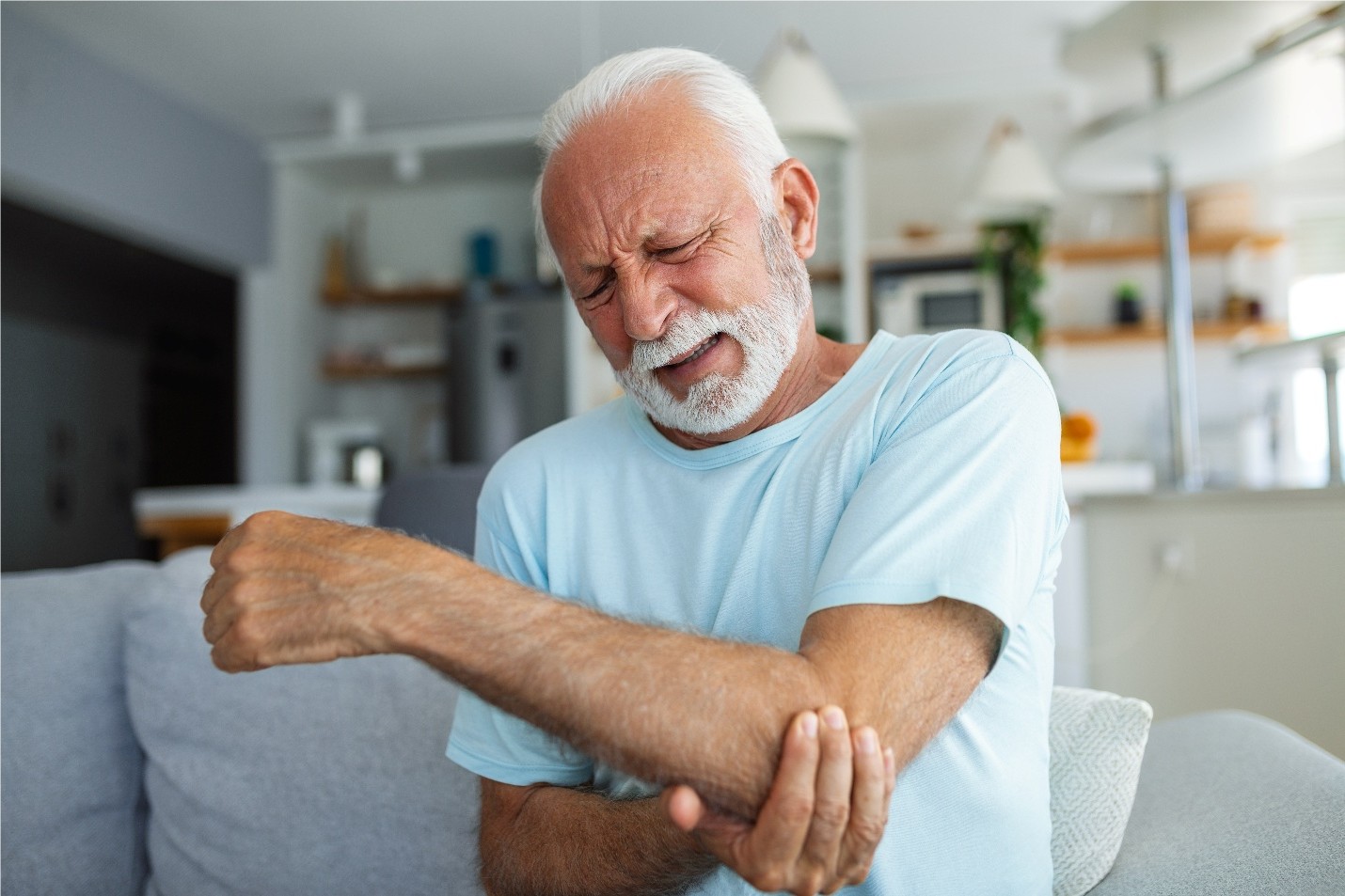What is tennis elbow?
Tennis elbow is another name for lateral epicondylitis. It occurs when the tendons that attach the muscle to the bone on the outside part of the elbow swell or tear. This weakens the elbow connection and puts great stress on the area. Tennis elbow often causes pain when you use the muscles to lift, grip, or twist.
What are the symptoms of tennis elbow?
Tennis elbow begins as an ache on the outside of your elbow. It gets worse over time until it is a severe burning pain. You may notice pain moving from the outside of your elbow to your forearm and the back of your hand when you grip, twist, or lift.
As the condition worsens, your grip may weaken. You may feel pain even when lifting light objects, such as a small book or coffee cup. Pain may increase when you press on the outside of your elbow.
In addition to pain, you may have swelling around your elbow joint.
What causes tennis elbow?
Overuse causes most cases of tennis elbow. It occurs when repeated movements cause swelling and pain in your joint and tendons. Any type of repeated motion or stress on the tendons can cause it. Playing tennis is only one of the ways you can get tennis elbow. People who play other racquet sports, such as racquetball or squash, and fencing are at risk. Certain jobs can lead to tennis elbow. Examples include painters, butchers, carpenters, musicians, manicurists, and dentists. People who work on an assembly line or use computers are at risk as well.
In some cases, the tendons can swell after a direct blow to the elbow. In other cases, the condition isn’t related to an activity at all.
Tennis elbow can occur at any age. It is most common in people 30 to 50 years of age. It affects both men and women.
How is tennis elbow diagnosed?
There are several things your doctor will do to diagnose tennis elbow. First, they will review your health history and lifestyle. Then, they will examine your elbow and arm to check for pain, swelling, and stiffness. They also may move your arm, elbow, wrist, and fingers. The doctor may order an X-ray or MRI of your arm. These tests help ensure you don’t have a break or fracture.
How can I prevent tennis elbow?
You may be able to avoid or prevent tennis elbow. It helps to maintain strength and flexibility in your wrists and arm muscles. You can do this by using light weights to strengthen and doing exercises to stretch. This is especially important for people whose sports or jobs put them at risk. Make sure you warm up your elbow, wrist, and arm before activity. Try to avoid repetitive movements. Wearing a splint during activities may help prevent the condition from getting worse.
What are the treatments for tennis elbow?
There are things you can do at home to help relieve pain and swelling.
- Rest your arm by avoiding the movement that caused the condition.
- Take an over-the-counter (OTC) medicine that reduces swelling, such as ibuprofen, naproxen, or aspirin.
- Apply an ice pack to your elbow for 15 to 20 minutes, 3 times a day.
- Wrap your elbow in a compression bandage.
- Do gentle stretching exercises several times a day.
- Try changing your sports equipment or technique.
- Try changing your work habitat and habits, or job.
Talk to your doctor if these treatments do not help. They may suggest:
- Using a splint or brace to keep your elbow still for 2 to 3 weeks.
- Getting a steroid injection to reduce swelling and pain.
- Getting a pulsed ultrasound to break up scar tissue, promote healing, and increase blood flow.
Once your pain and swelling have decreased, physical therapy can help reinforce your muscles and tendons. This includes stretching, range-of-motion, and strengthening exercises. Most people improve in 4 to 6 weeks.
If your pain does not improve or if it affects your lifestyle, your doctor may suggest surgery. Usually, surgery occurs in an outpatient center. This means you don’t have to stay in the hospital. During surgery, the doctor will make a small cut on the outside of your elbow. They will remove the damaged tendon tissue and reattach normal tendon tissue to the bone.
Living with tennis elbow
Most people recover from tennis elbow after treatment. You may need physical therapy or a brace to help manage ongoing symptoms or prevent them from coming back.
Call your doctor if:
- The pain does not improve or gets worse.
- The area becomes red or swollen.
- You have trouble moving your arm.
- You see a lump or bulge on your arm.




